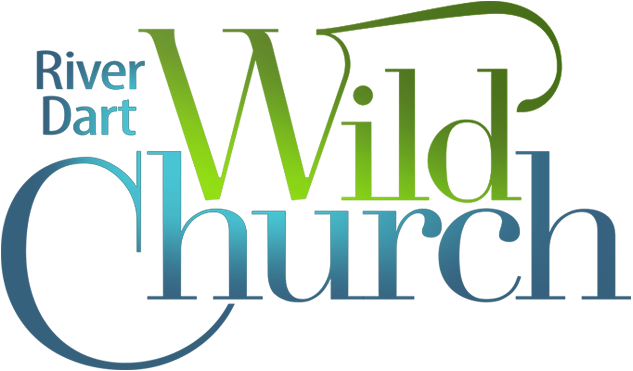After spending much of 2022 on our one year residency at St Barnabas Church (near Brooking, by the Bidwell Brook – a tributary of the Dart) what a blessing it was to return to our signature River Dart Way ‘sea to source’ pilgrimage. Over the nine years + of our wild church, since we began with our first ‘length of the Dart’ pilgrimage, those we have made by canoe have always been a real highlight and this one was particularly special in marking the start of this year’s journey upstream from Dartmouth. It was also the beginning of a learning journey, as part of seeking to raise awareness about the Dart Estuary saltmarshes. For a short version of this post in our fb community click here.
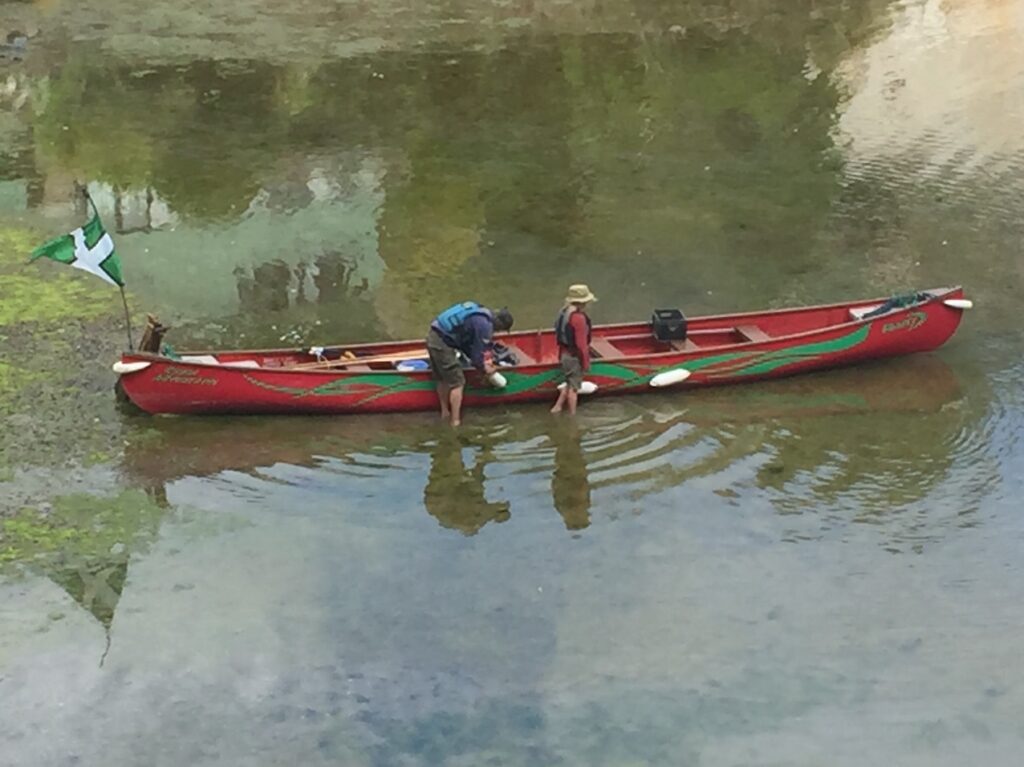
On Sunday July 2nd, our eleven person pilgrim flock gathered on the damp sands of Warfleet Creek, Dartmouth. It was not long after midsummer, just before the full moon and as the low tide was turning. I felt rather moved to reflect that some of those gathered, and some meeting each other for the first time, may well be travelling together along the Dart for several years to come. After weeks of drought and warm sunshine, the weather was also on the turn, with the wind having got up in the night (often a source of concern when going out on the water) and with a hint of rain laden clouds coming in. Yet spirits were high as we approached the Creek to see our brightly coloured and very large canoe on the water (shown above), with our wonderful skipper, Hugh Clifford of Canoe Adventures, and his young son, Finch, getting everything ship shape for our arrival.
The fourfold pattern to our pilgrimages, as inspired by Holy Communion, starts with what we call the ‘gather‘ stage. This is always something of a challenge for a new group of people coming together; as we juggle lift shares, timings, finding our meeting place etc. On a canoe pilgrimage timing is crucial, especially when we need need to catch the rising tide to make way against the wind and downstream water flow… as the tide waits for no woman! Also our single large canoe needs the whole team to propel us up the river, so for me there’s always a certain frisson as I wait to see if the gather is going to come together. This includes watching myself (!) as I am equally capable, as I was this time, of getting slightly lost and being a bit late…
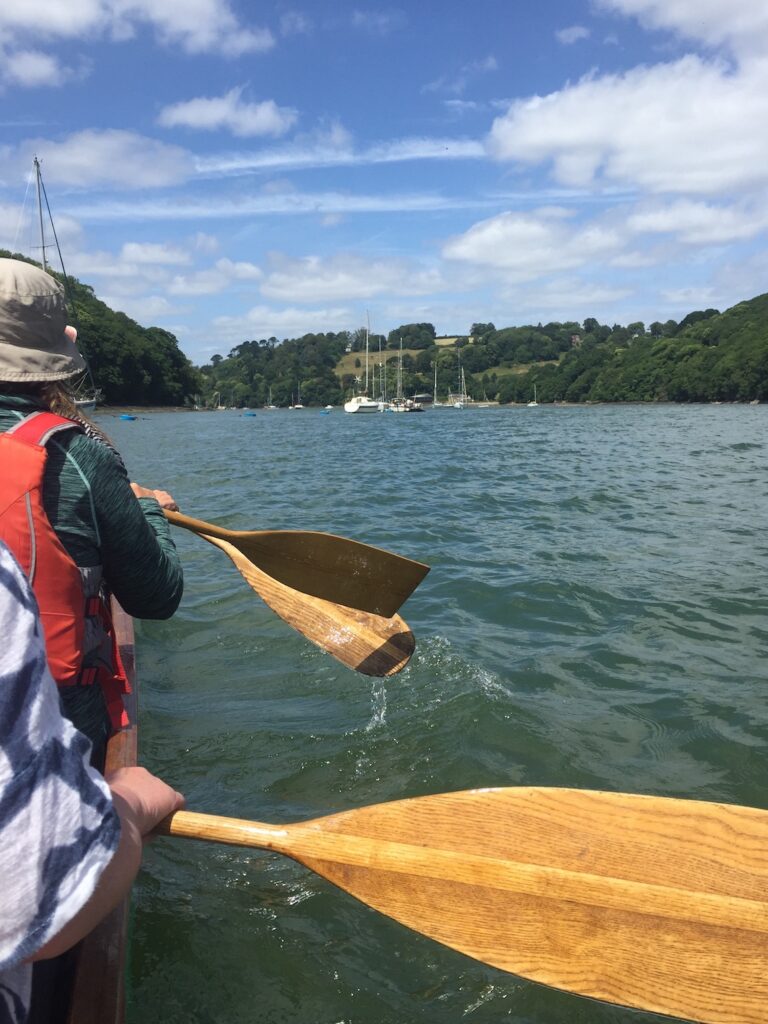
Yet that happy moment arrived, when we were all on the beach together and preparing for the journey to come. While Hugh & Finch set out an array of paddles & buoyancy aids, our foraging guide, Myrtle Cooper, reminded us of our particular focus for this year- the Dart saltmarsh- and our special guest, Tyler Freeman Smith, introduced us to his own recent ‘sea to source’ pilgrimage, inspired by the Dart Atlantic Salmon. Soon we were quietly paddled upstream, with Tyler setting the stroke for us and providing a steady paddling rhythm throughout our journey, which was such a blessing. For a group with mixed canoeing experience this is another significant aspect of gathering – learning to paddle together and work as a team. There are always interesting insights to discover in this learning and more than one pilgrim commented later on how they had been aware of shifts within themselves – feeling sometimes ‘in the flow’ and sometimes losing their rhythm – and many also noticed this within the group as a whole. There were times when we just seemed to come into communion with each other and the river beautifully – paddles dipped and rose in unison and there was a sense of strength and connection as the canoe rode the tide upstream. While at other times there were accidentally clashing paddles, flying spray and laughter! As we settled increasingly into teamwork and silence, I found it rather highlighted how the world around us was quite chaotic and not at all silent! Dartmouth is a busy harbour and we met everything from enthusiastic, ice cream seeking, paddle boarders to laden ferries and cruise boats. Hugh deftly steered us over and around obstacles and potential hazards, and how fascinating it was to see all the different craft and layers of both present life and his/herstory in the people and buildings of Dartmouth and Kingswear.
Gradually the busy, built up nature of the town was left behind and we moved into quieter reaches of the Dart, taking time to drift silently and be aware of the wilder life around us. We were now entering more deeply into the second ‘engage’ stage of our journey: where as a wild church each of us has the opportunity to ‘read’ the ‘big book’ or wild scripture of the natural world we are part of. In my own ‘reading’ I was very conscious of the scarcity of the waterfowl in these wilder reaches. As climate & biodiversity crisis deepens and especially after these years of avian flu, there is a notable lack of waders, dabblers and other birds on the water, mudflats and shorelines of the Dart. A few decades ago, the Dart would have been thronged with oyster catchers, curlew, lapwing, whimbrel, red shank, sandpiper and shelduck (to name a few) and some of these species are now ‘red list’ endangered species. This loss makes the moments of wild encounters all the more precious, such as seeing crows strutting in the mud, a little egret fishing on the tideline and a flock of herring gulls (‘red listers’) that wheeled close around us later on the journey. I hope it can also motivate us as sacred activists to seek out ways to help.
Other species are both equally challenged and equally precious. Above the high tide line are the great River Dart ria (steep sided river valley) oaks which cantilever dramatically over the water and provide habitat for a huge diversity of life. It is from an old celtic root word for oak, dar, that we get the name Dart, which is truly a river of oaks. After a second period of silent drifting near Greenway, as we began to move again we woke a sleeping a seal that was snoozing and snoring, as it floated vertically by a nearby buoy, with its nose in the air! But our particular focus for today was on the fragile eco systems of the Dart saltmarsh, which we were able to visit carefully when we stopped for the third stage of our journey, ‘share’ at Gurrow Point just upstream of Dittisham.
After three hours of mostly silent paddling and drifting, I think we were all ready to have our feet back on solid ground for a while and have time to share snacks, conversation and tea. I noticed that Hugh was careful to pull the canoe up to a stony spit and to brew up here too. Myrtle also reminded us that it’s important not to disturb the saltmarsh areas by pulling boats or walking over the spongy areas, to take care around the plants and forage responsibly. Saltmarsh can include many meters of dead plant matter in great muddy mats that act as huge carbon sinks and need to not be compressed or damaged. The salt tolerant plants that form over this, especially higher up within the intertidal zone, are specialised species and some have been foraged over centuries by both human and more than human creatures (whose need is usually greater than ours). As well as sequestering carbon, saltmarshes filter and improve water quality, enhance biodiversity and provide habitat and food for many creatures. They slow down water flow and so help with flood and coastal defence. In a time of increasing challenges in all these areas, this makes saltmarshes biodiversity and climate crisis superheroes! So they deserve our respect, care and support.
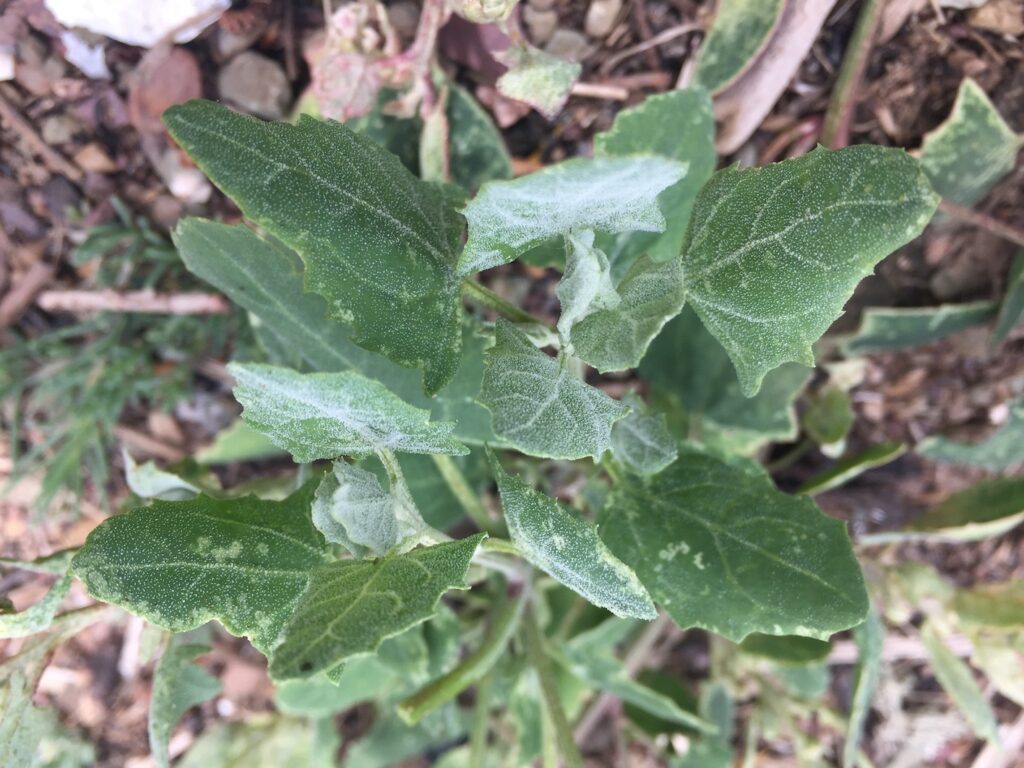
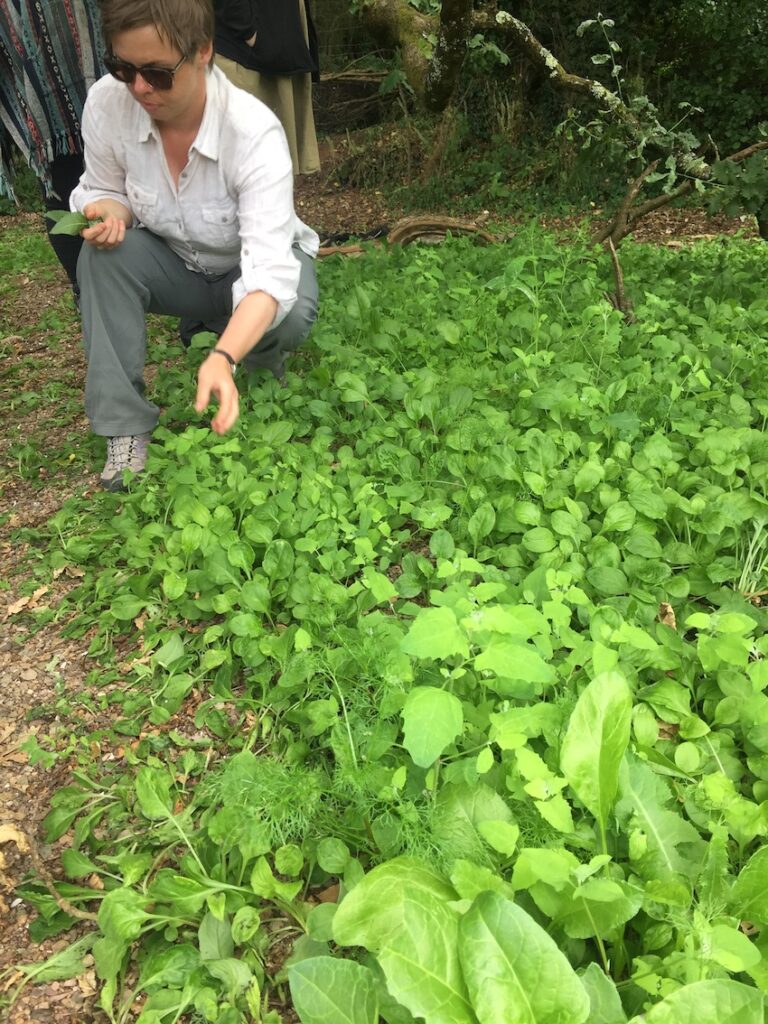
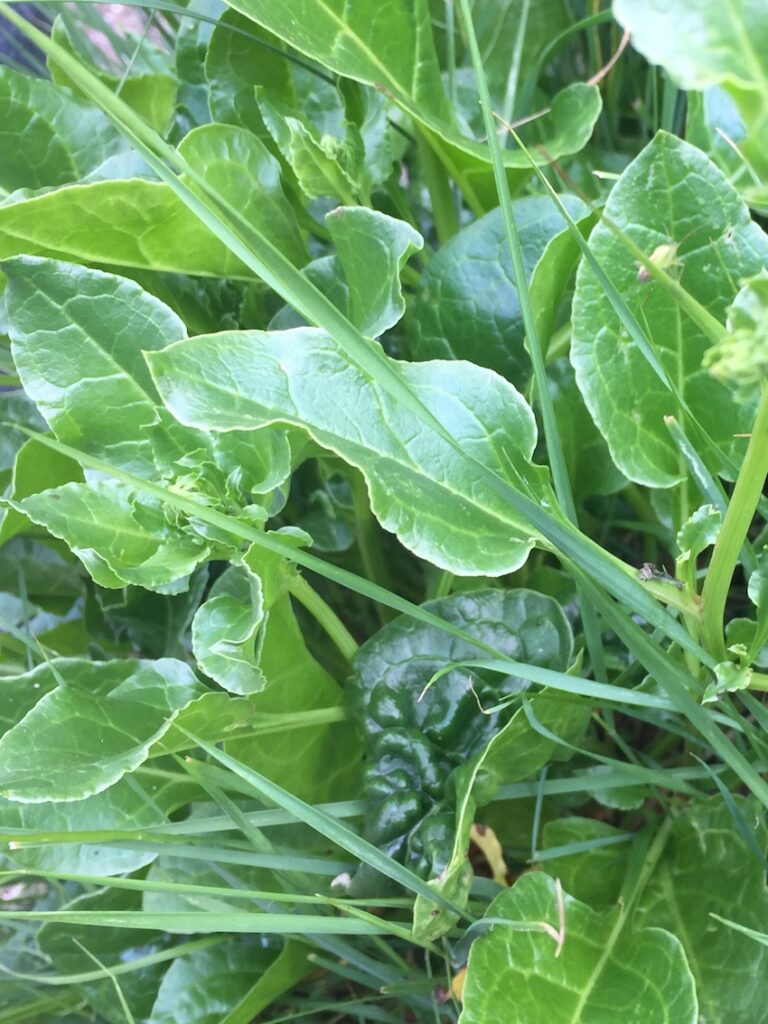
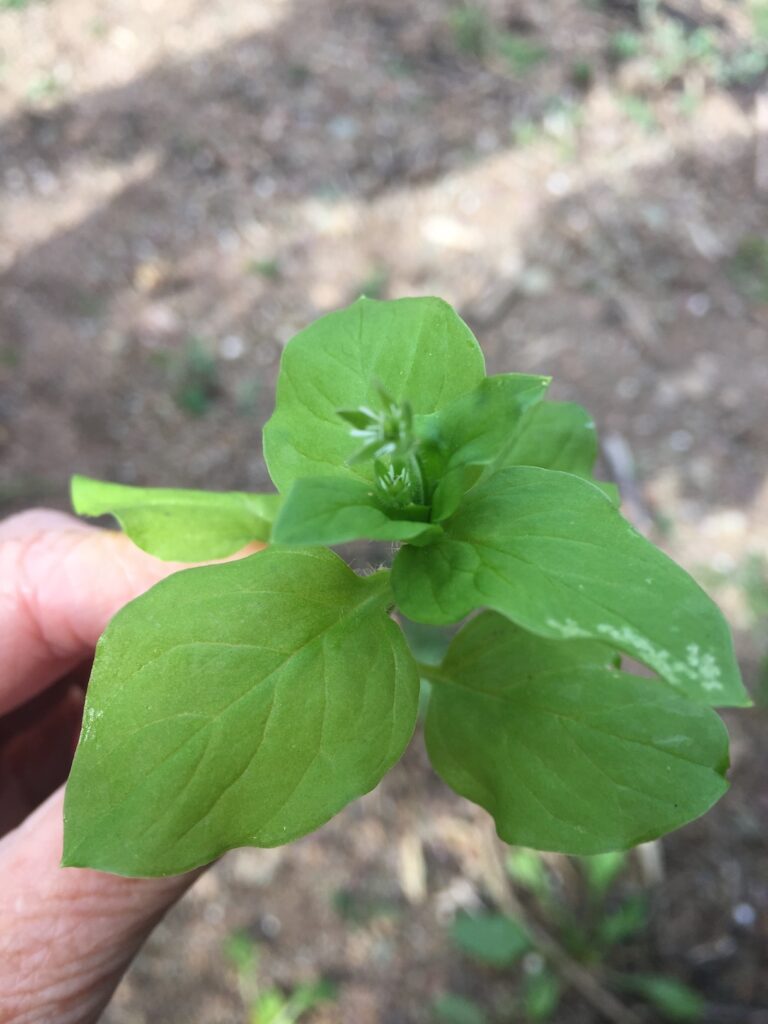
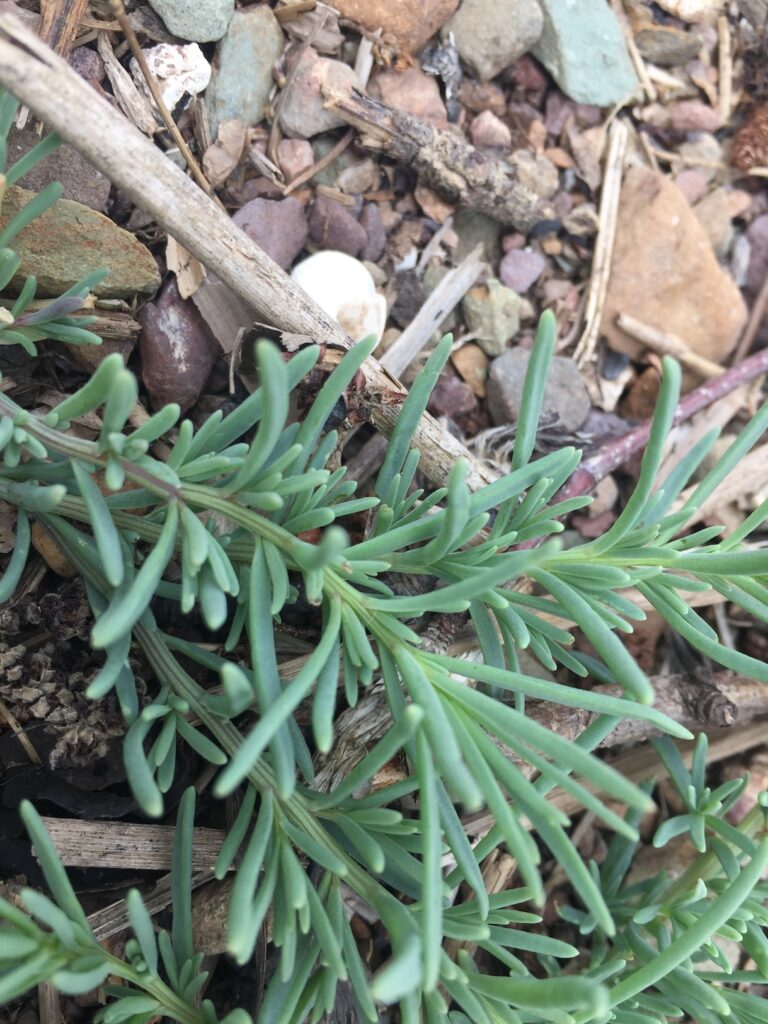
In introducing us to saltmarsh plants, Myrtle first pointed out the striking difference between the grey green and lower growing habit of the salt tolerant plants and the lusher, brighter green, greater height and abundance of their near neighbours growing above the high tide line. This was particularly striking where we compared two types of orache (Atriplex species, in the amaranth family): one being sea orache, in the saltmarsh area, and the other growing higher up, under the nearby oaks. Apparently oraches are some of the most nutritious plants and contains many vitamins, such as calcium, magnesium and manganese. Under the oak, in what Myrtle delightfully described as the ‘wild salad bar’, we nibbled on Fat Hen (Chenopdium & also a goosefoot), chickweed ( Stellaria media), which can be distinguished by a single line of tiny hairs growing along the stems, and sea beet (Beta Vulgaris), which is the ancestor of garden plants such as beetroot and chard. Back by the saltmarsh we also tasted the salty and succulent seablite (Suaeda maritima). As well as their salty, savoury taste, the saltmarsh edible plants are also rich in iodine, which is not found in many plants other than seaweeds.
After sharing a little of the abundance of these riverside edible plants, including some home pickled marsh samphire which Myrtle had brought with her, we completed the ‘share’ stage of our pilgrimage with a silent communion. I always find it very moving to be in a circle of people who are willing to give to and receive from each other, as we pass round our ‘loving cup’ in this way. In our communion bowl today we had aromatic, summer wild flower gin, made with yarrow, mint and mugwort. Then we shared reflections on our experience of the afternoon and finished with the final stage of ‘bless’ as we took some quiet time to reflect inwardly on blessings received from our time together with the river and saltmarsh, and on what learning or questions we might take home to share with others. For myself it is a desire to better understand and know how to contribute to the conservation of the River Dart’s saltmarsh.
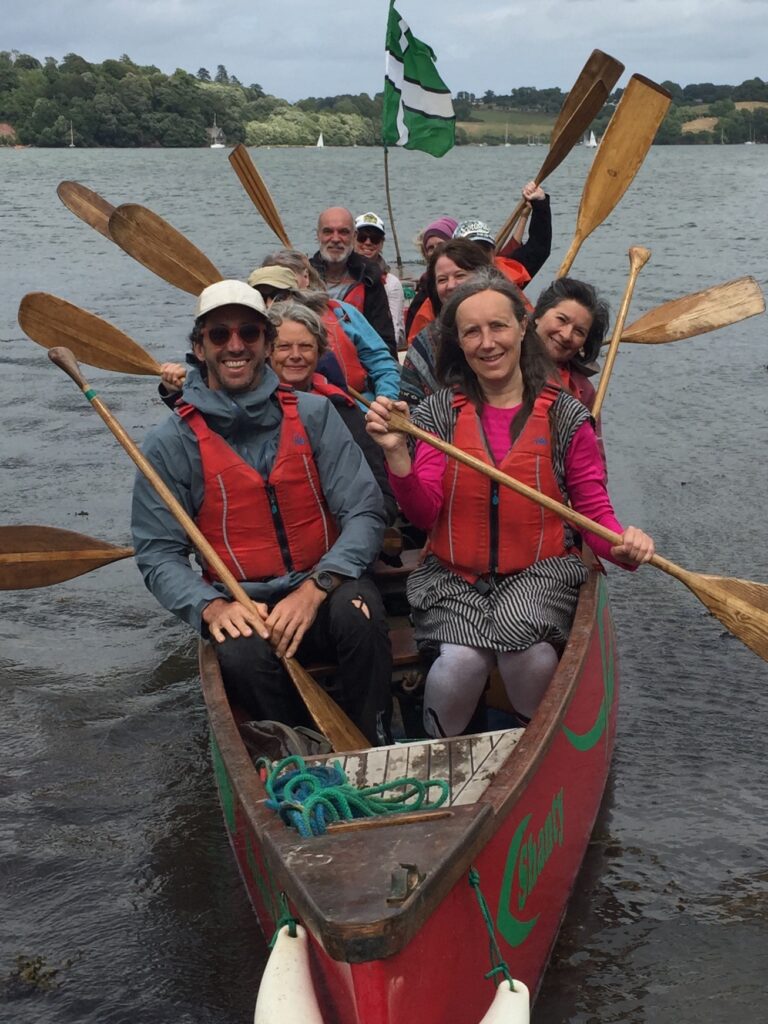
Then it was time to pack up, collect up any litter found (as a contribution to river care) and head back to our canoe. As part of preparing to return to our different homes, we now sang and chatted as we paddled back to the Ferry Boat Inn at Dittisham and so came to the close of a enriching afternoon. Deep thanks to all pilgrims, our guides and all the wild beings we met along the Way. The next stage of our Sacred Waters Way will be on August 6th, as we travel from Dittisham to Cornworthy with the guidance of Isabel Carlisle, co founder of the Bioregional Learning Centre. Our pilgrimages this year are offered as a contribution to their Living Dart: The Saltmarsh Project.
